Rotor installation at the Grindbakken warehouse in Ghent
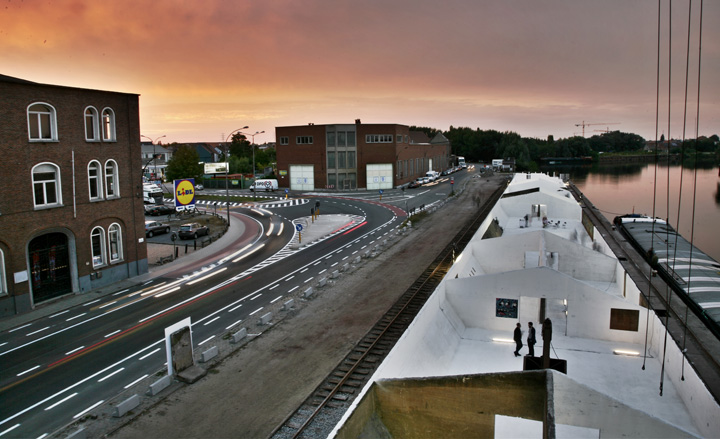
When architecture practice OMA's new masterplan for Ghent's docklands becomes a reality, many existing buildings will be replaced and new activities and residents will make the area their new home.
Before this happens though, Belgian creative collective Rotor have stepped in to present their own interpretation of the changing neighbourhood with an exhibition in one of its abandoned warehouses, the Grindbakken.
Rotor's show is the first exhibition in this old concrete warehouse (formerly used for transferring gravel and sand between ships and trucks), which is set to become a multi-purpose space for the area, in the build up to its transformation.
Invited by renovation architect Sarah Melsens and artist Roberta Gigante to create the first intervention in the space, the studio has played with the building's recent whitewashing in order to shine a light on the parts of the structure that would otherwise go unnoticed.
'When we visited the site before it was transformed, we were attracted to the graphic quality of several elements in the concrete structure: the colour gradients, traces of previous uses, graffitis, numerous plants, the omnipresence of iron oxides, the freshly made holes and cuts in the concrete walls,' says Rotor.
Interfering with the painting process, the studio chose a number of 'areas of interest', and created 36 frames on site to protect these areas during the structure's cleaning and painting. 'It is a way to guide the eye to specific elements that have a story to tell,' they say.
Rotor, formed by Tristan Boniver, Renaud Haerlingen, Lionel Billiet and Maarten Gielen, is known for its clever and often conceptual approach - previous works have included the successful OMA exhibition at the Barbican last year and the critically acclaimed Belgian Pavilion at the Venice Architecture Biennale two years ago.
The group's Grindbakken exhibition forces the viewer to examine this old structure in fresh ways. Says Rotor: 'Speaking about the materiality and ageing of concrete may also refer to the concrete that will be flowing abundantly in the next decades in this neighbourhood. However, what we did is a radically descriptive, precise and ultimately conservative work in a context where decisions are taken at a huge scale.'
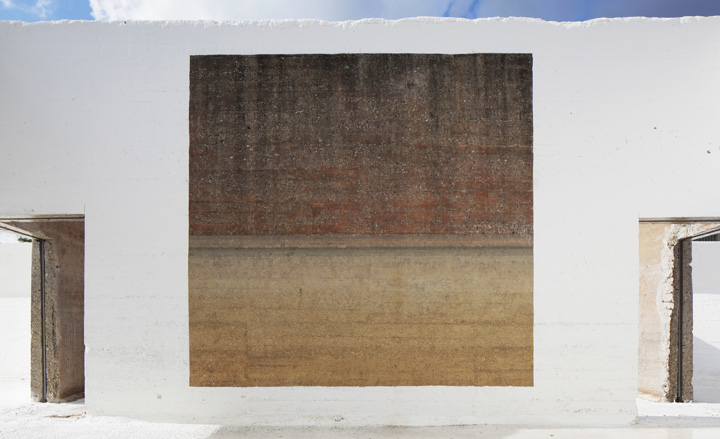
Rotor's installation brings new focus to the parts of the structure that would otherwise go unnoticed.
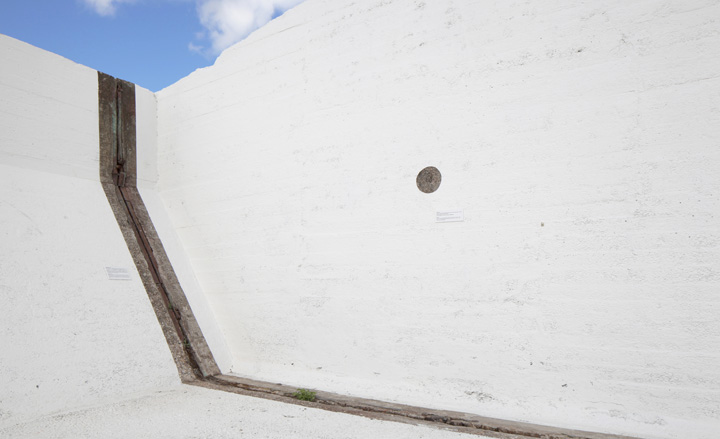
'When we visited the site before it was transformed, we were attracted to the graphic quality of several elements in the concrete structure: the colour gradients, traces of previous uses, graffitis, numerous plants, the omnipresence of iron oxides, the freshly made holes and cuts in the concrete walls,' says Rotor.

Rotor's show is the first exhibition in this old concrete warehouse (formerly used for transferring gravel and sand between ships and trucks), which is set to become a multi-purpose space for the area, before OMA step in to redevelop Ghent's docklands.
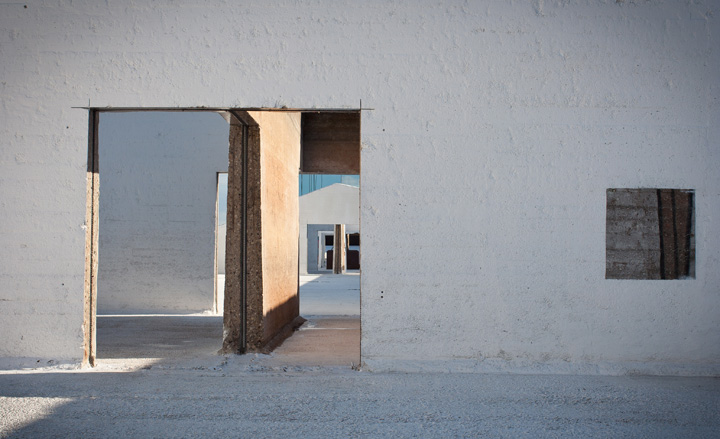
Interfering with the painting process, the studio chose a number of 'areas of interest', and created 36 frames on site to protect these areas during the structure's cleaning and painting.
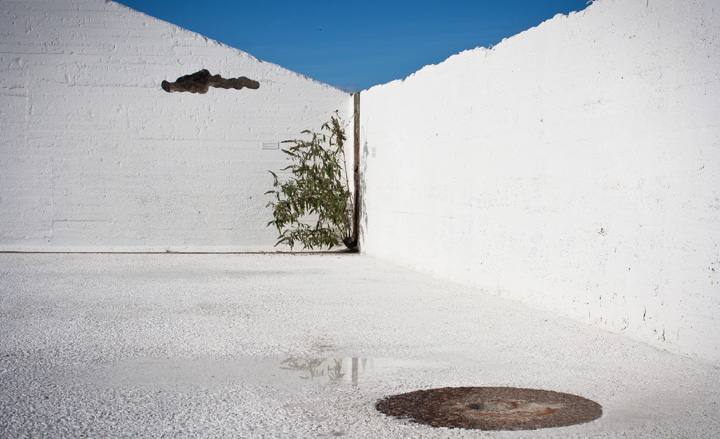
'It is a way to guide the eye to specific elements that have a story to tell,' they say.
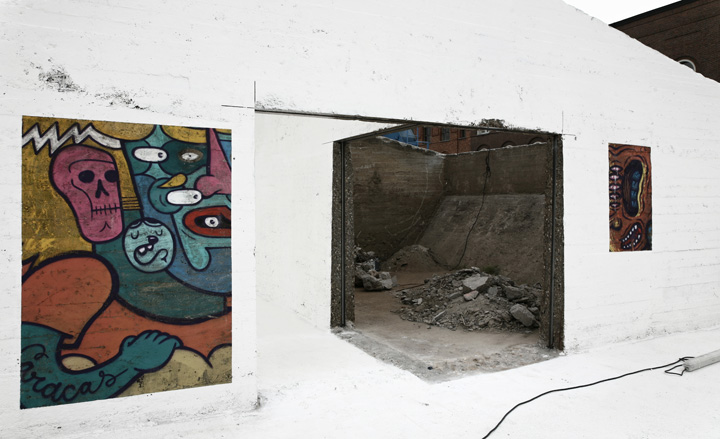
Rotor's Grindbakken exhibition forces the viewer to examine this old structure in fresh ways.
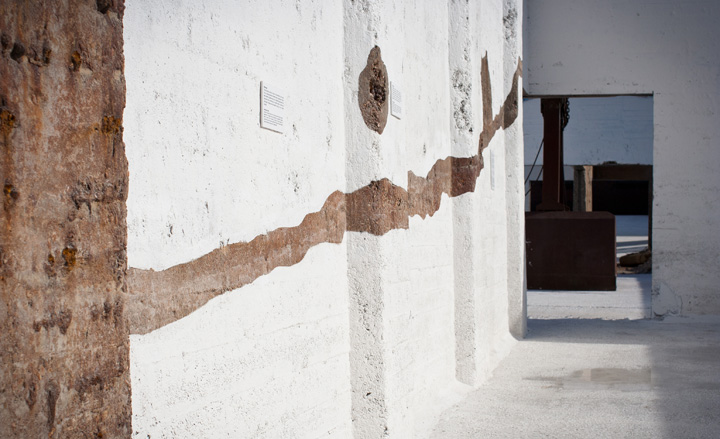
Says the studio: 'Speaking about the materiality and ageing of concrete may also refer to the concrete that will be flowing abundantly in the next decades in this neighbourhood...'
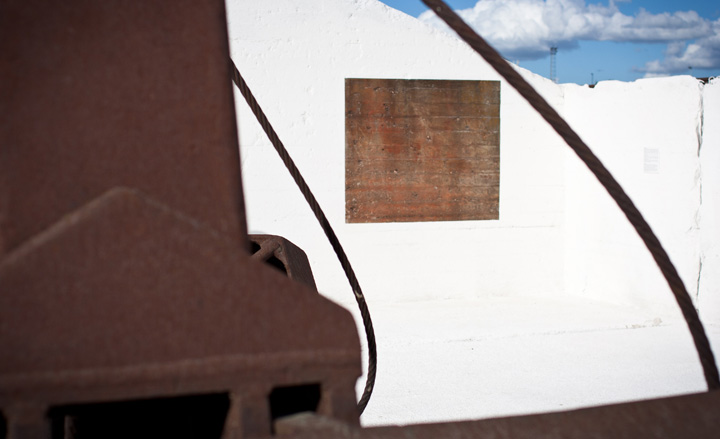
... 'however, what we did is a radically descriptive, precise and ultimately conservative work in a context where decisions are taken at a huge scale.'
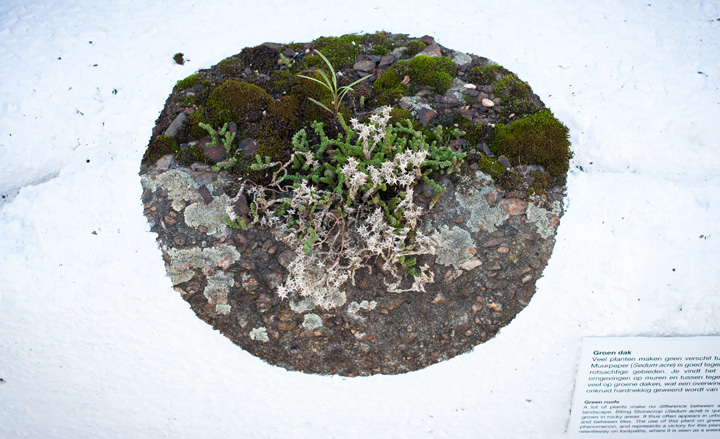
Plants sprouting through the concrete become works of art.
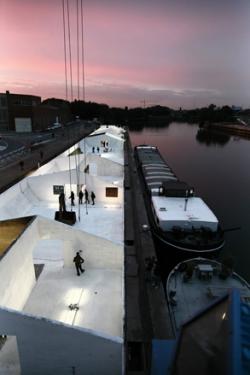
The warehouse itself has been renovated for its reincarnation as a temporary arts space.
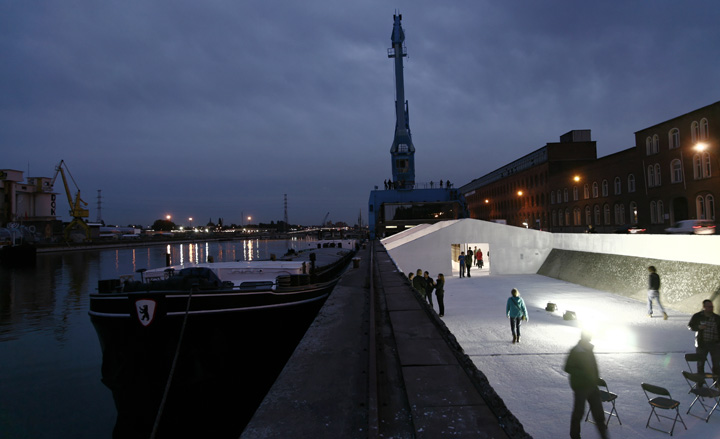
The Grindbakken has been renovated by architect Sarah Melsens and artist Roberta Gigante.
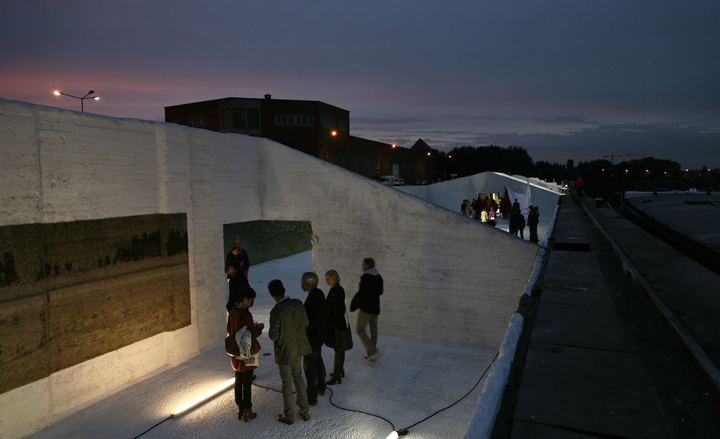
Clever lighting adds extra drama to the space at night.
Wallpaper* Newsletter
Receive our daily digest of inspiration, escapism and design stories from around the world direct to your inbox.
Ellie Stathaki is the Architecture & Environment Director at Wallpaper*. She trained as an architect at the Aristotle University of Thessaloniki in Greece and studied architectural history at the Bartlett in London. Now an established journalist, she has been a member of the Wallpaper* team since 2006, visiting buildings across the globe and interviewing leading architects such as Tadao Ando and Rem Koolhaas. Ellie has also taken part in judging panels, moderated events, curated shows and contributed in books, such as The Contemporary House (Thames & Hudson, 2018), Glenn Sestig Architecture Diary (2020) and House London (2022).